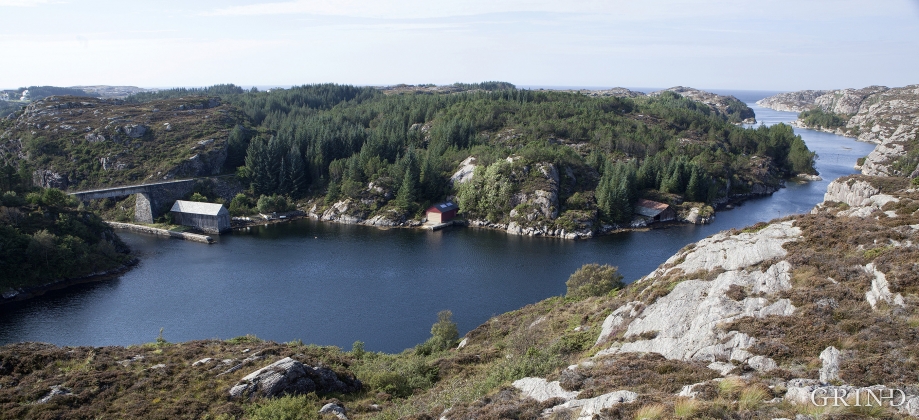Published: 06.08.2015 | Author: Nils Georg Brekke, Nils O. Golten
Goltasund bridge and Goltasundet (Svein Nord).
For generations the land-seine was the most important tool for catching herring and mackerel, and therefore a suitable casting bay was worth its weight in gold. Goltasundet (the Golta sound) on Golta was such a place. Here the herring often drifted in and fantastic casts might be made here.
When the herring or the mackerel shoals entered the Golta sound, it was a question of closing the bay with the seine as fast as possible. All the owners collaborated on this seine fishing. In order to get the seine out before the fish left, there had to be a guard. The proprietors took turns in sitting guard in the fishing sheds in Goltasundet to watch for herring or mackerel.
After the purse seine came into use early in the last century, it gradually replaced the land-seine. The fishermen no longer needed to depend on good casting places. Nevertheless there were successful land-seine catches in Goltasundet just after WWII. Golten Land-seine Group was probably organised at the end of the 1800s. All the 11 proprietors had a share in the group, which owned boats, seine workshops, seine sheds, boathouse and lodging house. Though the last casting in Goltasundet was made in the early 1950s, Golten Land-seine Group exists to this day. With the boats and buildings still in existence, Golten Land-seine Group owns one of the most complete land-seine works in Hordaland.



